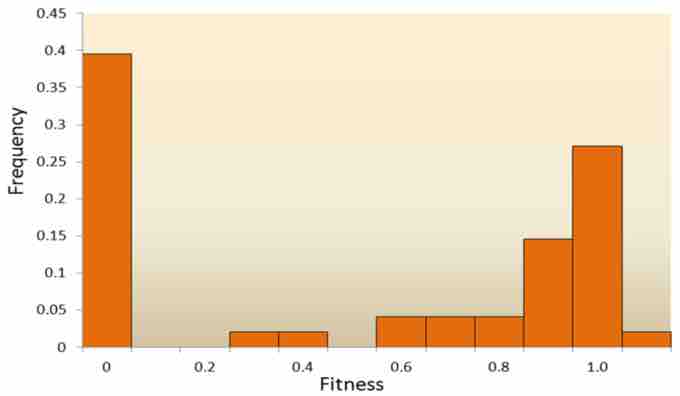In molecular biology and genetics, mutations are accidental changes in a genomic sequence of DNA: the DNA sequence of a cell's genome or the DNA or RNA sequence in some viruses. These random sequences can be defined as sudden and spontaneous changes in the cell. Mutations are caused by radiation, viruses, transposons, and mutagenic chemicals. They are also caused by errors that occur during meiosis or DNA replication. They can also be induced by the organism itself, through cellular processes such as hypermutation.
Site-directed mutagenesis, also called site-specific mutagenesis or oligonucleotide-directed mutagenesis, is a molecular biology technique often used in biomolecular engineering in which a mutation is created at a defined site in a DNA molecule. In general, this form of mutagenesis requires that the wild type gene sequence be known. It is commonly used in protein engineering .

The distribution of fitness effects
The distribution of fitness effects of mutations in vesicular stomatitis virus. In this experiment, random mutations were introduced into the virus by site-directed mutagenesis. The fitness of each mutant was compared with the ancestral type. A fitness of zero, less than one, one, more than one, respectively, indicates that mutations are lethal, deleterious, neutral, and advantageous.
The basic procedure requires the synthesis of a short DNA primer. This synthetic primer contains the desired mutation and is complementary to the template DNA around the mutation site so it can hybridize with the DNA in the gene of interest. The mutation may be a single base change (a point mutation), multiple base changes, deletion, or insertion. The single-stranded primer is then extended using a DNA polymerase, which copies the rest of the gene. The copied gene contains the mutated site. It is then introduced into a host cell as a vector and cloned. Finally, mutants are selected.
The original method using single-primer extension was inefficient due to a lower yield of mutants. The resulting mixture may contain both the original unmutated template as well as the mutant strand, producing a mix population of mutant and non-mutant progenies. The mutants may also be counter-selected due to presence of a mismatch repair system which favors the methylated template DNA. Many approaches have since been developed to improve the efficiency of mutagenesis.